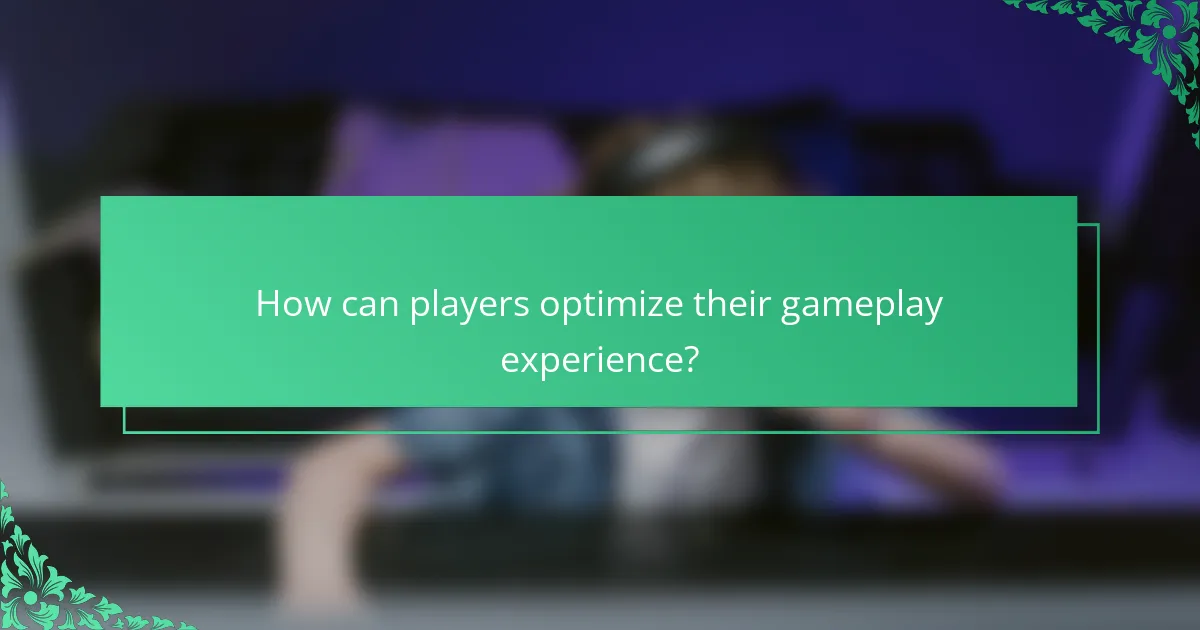Super Mario Bros. offers a captivating gameplay experience through its innovative mechanics, strategic power-ups, and expertly crafted level design. Players face challenges like timing jumps and navigating enemies while utilizing power-ups such as the Super Mushroom and Fire Flower. The level design promotes exploration and skill development, balancing difficulty and reward. Understanding these elements enhances player engagement and enjoyment.

How do gameplay mechanics influence player experience?
Gameplay mechanics in Super Mario Bros. significantly enhance player experience by creating engaging challenges and rewarding exploration. The level design encourages players to master jumping and timing, while power-ups, like the Super Mushroom, provide unique attributes that change gameplay dynamics.
The game’s structure allows for varied experiences through secrets and hidden areas, promoting curiosity and experimentation. Each level introduces new mechanics, keeping the gameplay fresh and stimulating.
Additionally, the balance of difficulty ensures that players remain challenged yet not frustrated, fostering a sense of achievement. Overall, these elements work together to create a memorable and enjoyable gaming experience.
What are the core mechanics of Super Mario Bros.?
Super Mario Bros. features core gameplay mechanics that include platforming, power-ups, and level design. Players navigate through various levels, overcoming obstacles and enemies while collecting power-ups that enhance abilities.
Power-ups, such as the Super Mushroom and Fire Flower, provide unique advantages, allowing Mario to grow or shoot fireballs. The level design incorporates diverse environments, from underground caves to castles, each with distinct challenges.
The game employs a scoring system based on collected coins and defeated enemies, adding a competitive element. Additionally, hidden areas and warp zones encourage exploration, enhancing replayability.
Overall, Super Mario Bros. combines engaging mechanics with innovative design, creating a timeless gaming experience.
How do mechanics vary across different game versions?
Mechanics in Super Mario Bros. vary significantly across game versions, affecting gameplay, power-ups, and level design. For instance, the original game features simple jumping mechanics and limited power-ups, while later versions introduce advanced physics, new abilities, and diverse level designs.
In Super Mario Bros. 3, players gain access to unique power-ups like the Super Leaf, enhancing gameplay through new mechanics such as flying. In contrast, Super Mario Odyssey offers a unique mechanic with Cappy, allowing players to capture and control enemies.
Level design has evolved, with earlier versions focusing on linear progression, while newer games incorporate open-world elements and complex level layouts, enhancing exploration and player engagement. Each iteration reflects advancements in technology and design philosophy, creating distinct experiences.
Why are timing and precision crucial in gameplay?
Timing and precision are vital in Super Mario Bros. gameplay because they directly influence player success and level completion. Mastering these elements allows players to navigate obstacles, defeat enemies, and collect power-ups effectively.
In Super Mario Bros., precise jumps ensure players land on platforms, avoiding hazards. Timing is crucial for executing moves, such as jumping on enemies or dodging projectiles. For example, the timing of a jump can determine whether a player reaches a power-up or falls into a pit.
Moreover, level design incorporates timing challenges, requiring players to react quickly to moving platforms and enemies. Successful navigation through these elements enhances the gaming experience and contributes to a player’s overall skill development.
Ultimately, mastering timing and precision not only leads to higher scores but also fosters a deeper appreciation for the game’s mechanics and design intricacies.
Which strategies enhance gameplay effectiveness?
Utilizing effective strategies enhances gameplay in Super Mario Bros. by improving player skills and maximizing power-ups. Mastering timing is crucial for jumping and dodging enemies. Collecting coins and power-ups boosts player abilities and score. Understanding level design helps anticipate obstacles and enemy placements. Using power-ups strategically, such as the Super Mushroom or Fire Flower, provides advantages in combat and exploration. Practicing level navigation can lead to discovering shortcuts and hidden areas, enhancing overall gameplay experience.

What role do power-ups play in gameplay dynamics?
Power-ups significantly enhance gameplay dynamics in Super Mario Bros. by providing players with unique abilities and advantages. These power-ups, such as the Super Mushroom and Fire Flower, allow players to overcome obstacles, defeat enemies, and explore levels more effectively.
The Super Mushroom increases Mario’s size, enabling him to break blocks and take an extra hit. The Fire Flower grants the ability to shoot fireballs, expanding combat options. These mechanics encourage exploration and strategic play, as players seek out power-ups to gain an edge.
Additionally, power-ups contribute to level design by creating opportunities for hidden areas and rewarding exploration. Players are incentivized to navigate the environment creatively, uncovering secrets that enhance their gaming experience. Overall, power-ups serve as essential tools that shape gameplay dynamics, fostering engagement and enjoyment.
Which power-ups are essential for progression?
Essential power-ups for progression in Super Mario Bros. include the Super Mushroom, Fire Flower, and Starman. The Super Mushroom increases Mario’s size and health, while the Fire Flower grants the ability to shoot fireballs. The Starman provides temporary invincibility, allowing players to bypass enemies and obstacles. These power-ups enhance gameplay by offering strategic advantages and facilitating level advancement.
How do power-ups affect character abilities?
Power-ups significantly enhance character abilities in Super Mario Bros. They provide unique advantages, such as increased speed, improved jumping ability, or invincibility. For instance, the Super Mushroom enlarges Mario, allowing him to break blocks and take an extra hit. The Fire Flower grants the ability to shoot fireballs, offering a strategic advantage against enemies. Each power-up alters gameplay dynamics, encouraging exploration and experimentation within levels. Collecting power-ups can lead to varied playstyles and enhance overall enjoyment of the game.
What are the most memorable power-ups in the franchise?
The most memorable power-ups in the Super Mario franchise include the Super Mushroom, Fire Flower, and Starman. The Super Mushroom transforms Mario into Super Mario, increasing his size and allowing him to break blocks. The Fire Flower grants the ability to throw fireballs, adding offensive capabilities. The Starman provides temporary invincibility, allowing players to defeat enemies without taking damage. Each power-up enhances gameplay, offering unique strategies for overcoming challenges.
How do power-up mechanics differ in various regions?
Power-up mechanics in Super Mario Bros. vary by region, reflecting cultural preferences and gameplay balance. For instance, the Super Mushroom is universally recognized, but some regions may emphasize different power-ups like the Fire Flower or Starman based on local player feedback. Additionally, certain power-ups may have unique visual designs or effects tailored to regional tastes, enhancing player engagement. These differences demonstrate how localized adaptations can enrich the overall gaming experience while maintaining core gameplay elements.

What insights can be drawn from level design in Super Mario Bros.?
Level design in Super Mario Bros. showcases how environment shapes gameplay. Key insights include the balance of challenge and reward, strategic placement of power-ups, and the use of level progression to enhance player skills. The game employs unique attributes like hidden areas and enemy placements to create engaging experiences. Rare design elements, such as warp zones, encourage exploration and replayability. Overall, the level design reinforces core mechanics, making it a masterclass in game development.
How does level design affect player navigation?
Level design significantly influences player navigation by shaping pathways, obstacles, and power-up placements. Thoughtfully crafted levels guide players through challenges and encourage exploration. For example, Super Mario Bros. utilizes verticality and hidden areas to enhance movement dynamics. Effective level design creates a balance between difficulty and accessibility, ensuring players remain engaged.
What are the principles of effective level design?
Effective level design in Super Mario Bros. emphasizes clarity, challenge, and engagement. Levels should guide players intuitively, using visual cues and obstacles that align with gameplay mechanics.
Key principles include:
1. **Consistent Theme**: Each level must maintain a coherent aesthetic and gameplay style that enhances immersion.
2. **Progressive Difficulty**: Challenges should gradually increase, allowing players to develop skills and confidence.
3. **Reward Systems**: Power-ups and hidden items incentivize exploration and mastery of mechanics.
4. **Player Agency**: Design should encourage creativity in navigation and problem-solving, allowing multiple approaches to challenges.
5. **Feedback Loops**: Immediate feedback from the environment helps players understand the consequences of their actions, reinforcing learning.
These principles create an engaging experience that keeps players invested in the game.
Which level design elements create memorable experiences?
Super Mario Bros. employs engaging level design elements that create memorable experiences through innovative gameplay mechanics and power-ups.
Key elements include distinctive level themes that encourage exploration, strategic placement of obstacles that challenge players, and the use of power-ups that enhance gameplay. The iconic Super Mushroom and Fire Flower provide unique attributes, offering varied gameplay experiences. Rarely, secret areas reward exploration, adding depth to the game. The balance of difficulty and reward keeps players engaged, ensuring lasting memories associated with each level.
How does level design adapt to different player skill levels?
Level design in Super Mario Bros. adapts to different player skill levels by incorporating varied challenges and power-ups. Beginners encounter simpler obstacles and more power-ups to aid progression, while advanced players face complex level layouts and fewer aids.
The design philosophy ensures that players of all skill levels can enjoy the gameplay. For instance, early levels introduce basic mechanics, allowing players to learn controls and strategies. As players advance, levels become more intricate, requiring refined skills and timing.
Power-ups play a crucial role in this adaptation. Items like the Super Mushroom offer beginners an advantage, while advanced players may rely on their skills to navigate without such aids. This balance keeps the game engaging and encourages skill development.
Overall, the thoughtful integration of challenges and rewards in level design maintains player interest and satisfaction across skill levels.

What challenges do players face in gameplay?
Players in Super Mario Bros. face challenges like timing jumps, navigating enemies, and utilizing power-ups effectively. These mechanics require skillful execution and strategic thinking. Each level’s design introduces unique obstacles, such as moving platforms and hidden traps, which test players’ adaptability. Mastery of power-ups, like the Super Mushroom and Fire Flower, enhances gameplay but requires understanding their timing and application. Players must balance exploration with speed to succeed, making gameplay both challenging and rewarding.
Which common obstacles require strategic thinking?
Common obstacles in Super Mario Bros. require strategic thinking to navigate level design and utilize power-ups effectively. Players often face challenges such as timing jumps, avoiding enemies, and managing power-up usage. Strategic thinking helps in planning routes through levels, deciding when to engage with foes, and optimizing power-up benefits. For example, knowing when to use a Super Mushroom versus a Fire Flower can significantly impact gameplay success. Additionally, players must adapt to unique level mechanics, such as moving platforms or hidden blocks, which require quick decision-making and foresight.
How do enemy designs impact gameplay strategies?
Enemy designs significantly influence gameplay strategies in Super Mario Bros. Players must adapt their approach based on the unique attributes of each enemy. For example, Goombas can be easily defeated by jumping on them, while Koopa Troopas can be used as projectiles. The level design incorporates enemies to create challenges, requiring players to time their movements and power-up usage effectively. Additionally, certain enemies introduce rare mechanics, such as the ability to fly or shoot projectiles, which necessitate different strategies for evasion or attack. This diverse enemy design enriches the gameplay experience and enhances strategic depth.
What are the most significant challenges in advanced levels?
Advanced levels in Super Mario Bros. present significant challenges due to complex level designs, enemy placements, and precise platforming requirements. Players must navigate intricate obstacles while managing power-ups effectively.
Key challenges include:
1. **Complex Level Design**: Levels often feature multiple pathways, hidden areas, and tricky jumps.
2. **Enemy Variety**: Advanced enemies possess unique behaviors that require strategic approaches.
3. **Power-Up Management**: Players must decide when to use power-ups for maximum effectiveness.
4. **Timing and Precision**: Many sections demand perfect timing to avoid hazards and complete jumps successfully.
5. **Increased Difficulty**: The overall difficulty escalates with fewer checkpoints and tougher enemies.
These factors collectively heighten the gameplay experience, testing players’ skills and strategies.

How can players optimize their gameplay experience?
Players can optimize their gameplay experience by mastering mechanics, utilizing power-ups effectively, and understanding level design.
Familiarize yourself with the core mechanics, such as jumping and running, to navigate levels efficiently. Utilize power-ups like the Super Mushroom and Fire Flower strategically to enhance abilities. Understanding level design helps players anticipate obstacles and plan their routes.
Experiment with different power-ups in various levels to discover unique advantages. Practice timing and precision to improve gameplay skills, leading to a more enjoyable experience.
What best practices should players follow for success?
To succeed in Super Mario Bros., players should master gameplay mechanics, utilize power-ups effectively, and understand level design.
First, players should familiarize themselves with character controls, including jumping and running, which are crucial for navigating obstacles. Next, power-ups like the Super Mushroom and Fire Flower enhance abilities, allowing players to defeat enemies and reach higher platforms. Lastly, understanding level design helps players anticipate challenges, such as enemy placements and hidden blocks, ensuring a smoother gameplay experience.
Combining these strategies increases the likelihood of completing levels successfully.
Which common mistakes should players avoid?
Players should avoid common mistakes that hinder progress in Super Mario Bros. These include neglecting power-ups, failing to explore levels thoroughly, and rushing through sections without assessing threats.
Power-ups enhance gameplay; missing them can lead to unnecessary challenges. For example, the Super Mushroom increases size, allowing players to take an extra hit. Exploring levels often reveals hidden items and shortcuts, which can significantly aid progress. Rushing can lead to unexpected enemy encounters or hazards, resulting in lost lives.
Additionally, players should avoid ignoring enemy patterns. Understanding how enemies behave can help in navigating levels more effectively. Lastly, overlooking checkpoints can result in repeated level sections, increasing frustration.
How can players leverage community resources for improvement?
Players can leverage community resources to enhance their Super Mario Bros. skills through forums, walkthroughs, and shared strategies. Online communities provide access to tips and tricks that improve gameplay mechanics and level navigation. Players can find video tutorials demonstrating effective use of power-ups and advanced techniques. Engaging with fellow gamers fosters collaboration, allowing players to share insights on level design and optimal routes for completion.


